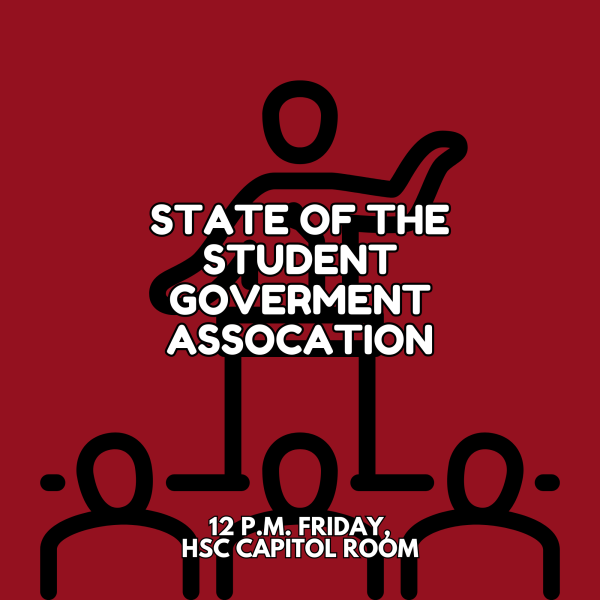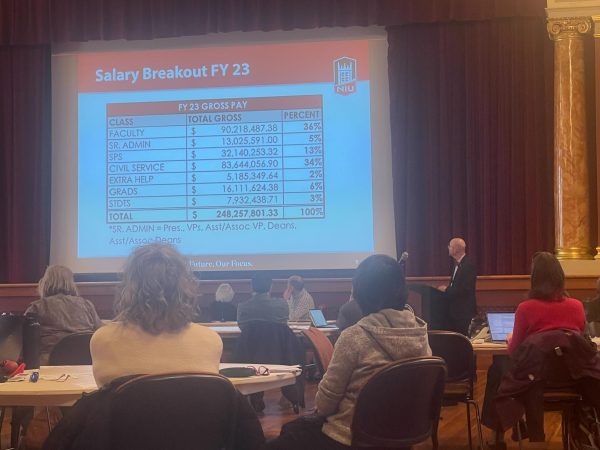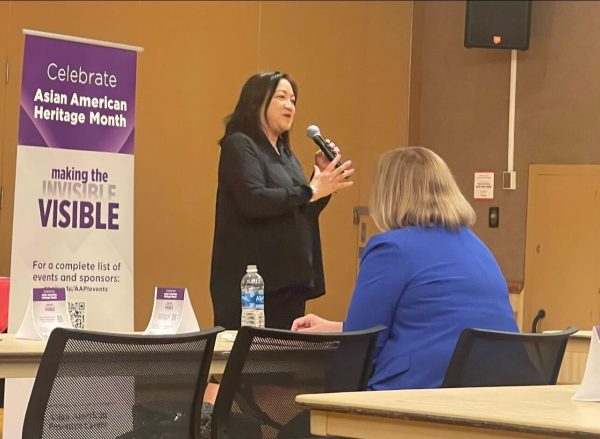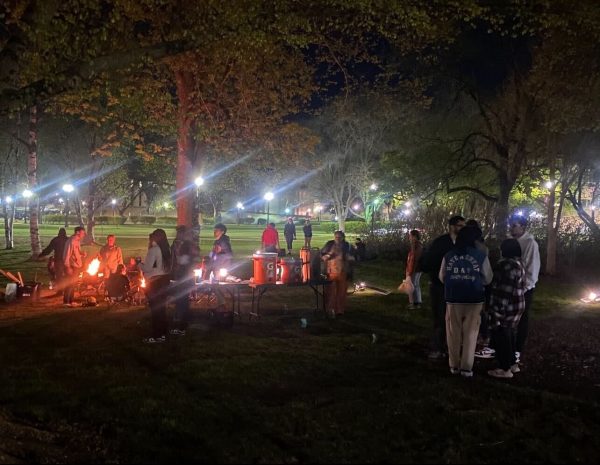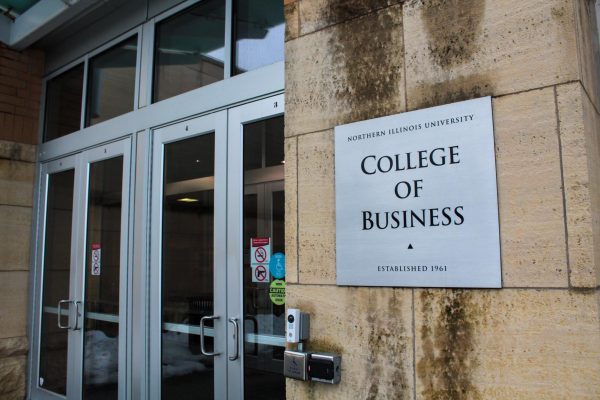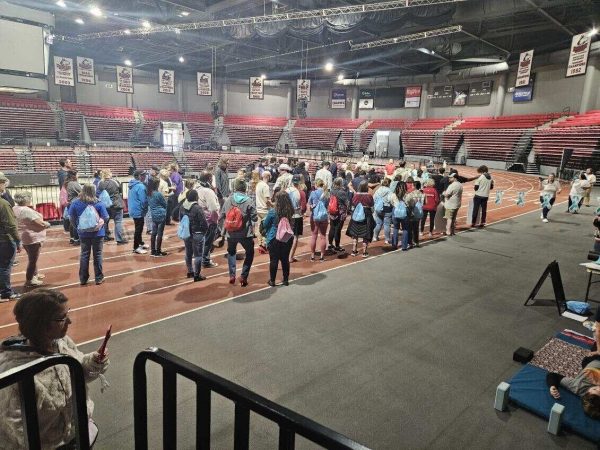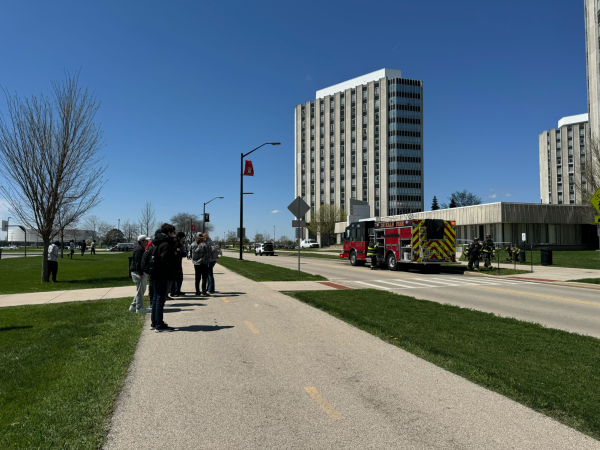SA Senate election sees low turnout
September 29, 2005
Biting fall winds and DeKalb’s first steady rainfall in months did not prevent students from voting in the Student Association’s Senate election Wednesday.
A total of 672 students, equal to less than 3 percent of the student population, voted Tuesday and Wednesday to elect eight senators to five districts. All districts reached the maximum number of representative candidates except districts One and Five, which received six and five senator candidates, respectively because only this many candidates ran for these districts.
Although the election is over, students felt problems and confusion plagued voting.
Public notification
Some felt the election was not well-publicized. While students may feel otherwise, the SA bylaws do not include rules that require public notification of its elections.
“I got two flyers today, but it didn’t help knowing [who to vote for] the day of,” said junior business major Gavin Cavanaugh..
LaToya White, a senior communication major and SA election commissioner, said 297 students voted Tuesday and 375 students voted Wednesday.
As commissioner, White is responsible for administering the election according to the SA Constitution and hiring, supervising and processing payment for all poll workers. White also can issue a sanction against a candidate, their supporter or any other person interfering with an election, according to Part II of the SA’s Bylaws.
“We publicized this election the same way we publicized [the election] last year,” White said.
The SA uses its Web site, the residence halls and any articles in the Northern Star to publicize elections, White said.
SA President DuJuan Smith sympathized with those who felt disenfranchised by the process.
“On behalf of the SA, we would like to apologize to students that felt the election was not publicized well,” Smith said in a phone interview Wednesday. “We will be looking into solutions for the future.”
Smith also said it was possible some students confused the senate election with the executive election in the spring, where four executive members typically campaign for about a month before the election.
Distribution of handbills
Colorful handbills randomly displaying names of the candidates circulated campus as students made their way to and from class Wednesday.
Although there were 50 candidates, many bills displayed random candidates’ names.
It stinks for the candidates because people don’t know who we are, said Michael Maris, candidate for District Four, as he passed out handbills that did not bear his name Wednesday afternoon by Cole Hall.
The bills are managed by individual candidates, White said. Bills do not have to be approved by stamp from the SA, only fliers that hang on walls.
“The SA wasn’t clear on the specifics for [accepting] handbills,” said Lee Blank, senior political science major and candidate of District Three.
If anything, the bills helped get candidates’ names out to voters.
“I didn’t have any clue what the offices were about, who the candidates were and what they stood for,” Cavanaugh said.
Vaguely-descriptive districts
Also adding to Wednesday’s confusion, the District each candidate was running for was not clearly defined.
In total, 40 Senators may be elected at one time, with a maximum of eight Senators representing a district.
District One includes students who live in Stevenson Towers, University Plaza and Neptune Hall during the academic year. District Two represents students living in Lincoln and Douglas Halls and Grant Towers.
District Three includes students who reside in DeKalb west of the Kishwaukee River, excluding students from Districts One, Two and Four. District Four is composed of students residing in DeKalb north of the City limits, east of the Kishwaukee River, south of Lucinda Avenue and west of Annie Glidden Road, but not including University Plaza.
District Five represents students who live in DeKalb east of the Kishwaukee River and all students residing outside DeKalb City limits during the academic year, according to Part II of the SA’s Bylaws.
White said a District can have eight people at a time maximum. A District, however, does not have a minimum number of Senators it must obtain to exist. If no Senator wishes to run for a specific District, for example, that District is not represented.
A candidate only needs one vote to secure their position if they already are on the ballot, regardless of the District they represent, White said.
Write-in candidates
At least one student also was upset about the SA’s write-in candidate procedures.
“There should be lines for write-in candidates,” said junior political science major Aaron Funtsinn. “I didn’t see anything around campus about running.”
Funtsinn said he would have ran as a write-in candidate if he had been able to register in time, but SA bylaws require all write-ins to register at least two weeks before the election.
Candidates can write their name here, said White, as she gestured to a blank area in the middle of the ballot intended for write-ins.
White said each individual ballot is checked for validity by poll workers, at which point they also check to see if any write-in candidates have been supplied.
Requirements for applying for senator include being a full-time student. If the candidate is a graduate student, they must have nine credit hours, White said.
– Staff Reporter Tara Snowden contributed to this article.



